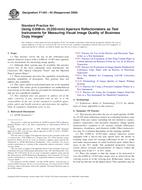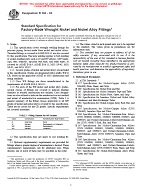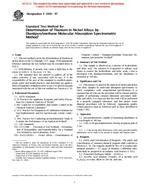1.1 This guide covers the concepts for calculating the in situ equivalent layer elastic moduli can be used for pavement evaluation, rehabilitation and overlay design. The resulting equivalent elastic moduli calculated from the deflection data are method-dependent and represent the stiffnesses of the layers under a specific nondestructive deflection testing (NDT) device at that particular test load and frequency, temperature, and other environmental and site-specific conditions. Adjustments for design load, reference temperature, and other design-related factors are not covered in this guide. The intent of this guide is not to recommend one specific method, but to outline the general approach for estimating the in situ elastic moduli of pavement layers.
1.2 This guide is applicable to flexible pavements and in some cases, rigid pavements (that is, interior slab loading), but is restricted to the use of layered elastic theory as the analysis method. It should be noted that the various available layered elastic computer modeling techniques use different assumptions and algorithms and that results may vary significantly. Other analysis procedures, such as finite element modeling, may be used, but modifications to the procedure are required.
Note 1 – If other analysis methods are desired, the report listed in Footnote 3 can provide some guidance.
1.3 The values stated in inch-pound units are to be regarded as standard. The values given in parentheses are mathematical conversions to SI units that are provided for information only and are not considered standard.
1.4 This standard does not purport to address all of the safety concerns, if any, associated with its use. It is the responsibility of the user of this standard to establish appropriate safety and health practices and determine the applicability of regulatory limitations prior to use.
1.5 This guide offers an organized collection of information or a series of options and does not recommend a specific course of action. This document cannot replace education or experience and should be used in conjunction with professional judgment. Not all aspects of this guide may be applicable in all circumstances. This ASTM standard is not intended to represent or replace the standard of care by which the adequacy of a given professional service must be judged, nor should this document be applied without consideration of a project’s many unique aspects. The word “Standard“ in the title of this document means only that the document has been approved through the ASTM consensus process.
Product Details
- Published:
- 06/01/2008
- Number of Pages:
- 7
- File Size:
- 1 file , 110 KB


